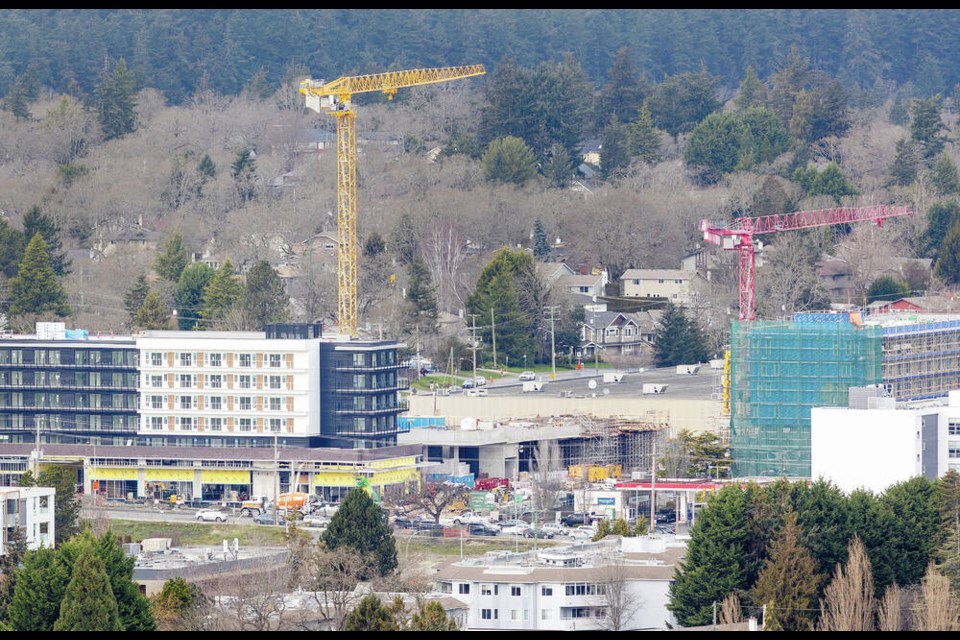The province is taking the most effective path to combat the housing crisis with its new zoning measures to encourage development, says the chief economist of the B.C. Real Estate Association.
“We need to build more housing, right?” Brendon Ogmundson told the Times Colonist.
“So, we either have a goal of building a lot more houses [and to] do so means rezoning and densifying — or we don’t get anywhere close to solving a housing crisis.”
Some people might wish there was another way to spur housing development, “but the private sector builds housing and we need to build a lot more of it,” Ogmundson said.
B.C. rolled out initiatives in 2024 to spur housing development in the province, including loosening zoning rules to permit multi-family plexes and focusing on housing around transit centres. It is now introducing a home-flipping tax.
“I think that what they’re doing with the rezoning is the best way to do it and even that is only one step,” Ogmundson said. “There are huge barriers in the way to actually achieving those goals, and not just on the policy side — just the economic conditions might not be there to hit those goals. So it’s a very large lift but it’s one that we can’t do without all that rezoning.
Bringing in the changes to local government planning is the only path available, he said.
“We’ve tried a lot of things to make housing affordable, through rationing demand, through tax policy, and it hasn’t worked.”
What hadn’t been tried is massively building in the way the province wants to see now. “Everything we’ve ever looked at in terms of analysis tells us that’s about the only way to do it.”
Ogmundson was among speakers at the Victoria Residential Builders Association’s annual Crystal Ball Housing Forecast, held at the Gorge Vale Golf Club.
Housing starts in Greater Victoria came in lower in 2024, at 4,185, down from 4,992 in 2023, Canada Mortgage and Housing said Thursday.
The regional powerhouse of new home construction was the West Shore, where a total of 2,428 homes got underway last year.
Greater Victoria is in what is generally considered a balanced market, said Dirk Vanderwal, chair of the Victoria Real Estate Board. After a post-pandemic spike, the past couple of years have been pretty stable and consistent.
Later in 2024, a couple of interest rate cuts delivered momentum and drew people back into the market, he said. Higher interest rates had kept some first-time buyers and investors out of the market, he said.
As far as whether the province’s zoning changes have had much impact, Vanderwal said: “I would say in our experience, uptake has been pretty slow around this. There’s only a handful of missing-middle-type projects in the development pipeline around the region.” That could change, however, he said.
It can be a challenge for developers to embark on projects that make financial sense.
An aging workforce in construction and the need to attract newcomers, along with high supply costs, are among challenges facing builders.
Other changes expected to drive the market include new rules for borrowers that saw the price cap for high-ratio insured mortgages move to $1.5 million from $1 million and the ability of some buyers to have access to 30-year amortization for mortgages.
Vanderwal said that with Donald Trump becoming the new U.S. president, “we are all sort of sitting on eggshells” waiting to see what is going to happen with his America First economic plan and other proposals.
The potential impact on Canada’s economy and possible responses by this country to Trump’s plan to impose 25 per cent tariffs on Canadian goods shadowed the event.
Casey Edge, executive director of the Residential Builders Association, told the meeting that government — not the private sector — controls the housing market.
“Three levels of government tell us where and what to build through zoning, when to build through permits, and how to build through the building code, and how much revenue they require [through] taxes, fees and amenities.”
The province is primarily responsible for high housing costs by refusing to cap fees like development cost charges, he said.
Edge called the province’s move to set housing targets for various municipalities a “Band-Aid.”
There’s a lack of responsible regional planning for housing, transportation and other infrastructure like light rapid transit, he said.
>>> To comment on this article, write a letter to the editor: [email protected]



